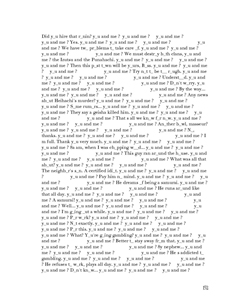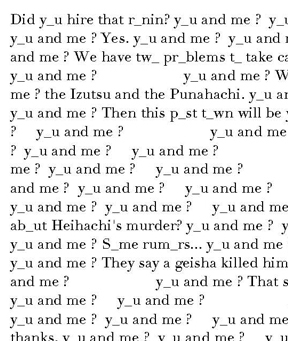Hyperrhiz 6
Weird & Wired: Sandy Baldwin, I Did the Weird Motor Drive
Rita Raley
UC Santa Barbara
Citation: Raley, Rita. “Weird & Wired: Sandy Baldwin, I Did the Weird Motor Drive.” Hyperrhiz: New Media Cultures, no. 6, 2009. doi:10.20415/hyp/006.r02
Abstract: Review of Baldwin, Sandy. I Did the Weird Motor Drive. BlazeVOX [books] 2007. 206pp.
Sandy Baldwin's self-styled "emissions" have many literary and cultural antecedents — Joyce, Dada, Surrealism, Ballard, Burroughs, to name just a few — yet are also striking, even startling, in their originality. There are echoes, reverberations, references, allusions to that which has come before, but the text itself and the reading experience is certainly unlike any other. I Did the Weird Motor Drive is probably best described as poetic tapestry, though one suspects that such an attempt at generic classification runs against the grain of the text, ordering what is meant to be left wild, normalizing what is meant to be left weird. At once sense and nonsense, Baldwin's tapestry, which is what I will name it regardless, combines what seems to be all possible typographic symbols: letters, numbers, punctuation and, of course, some elements of code. It is as if the white space of the page has been infiltrated by all sorts of non-linguistic, a-semantic characters. The effect is, again, nonsense, gibberish, noise, the absurd. The dislocations are syntactic, semantic, temporal: I did; what did I do; I did the weird & wired motor drive. One can speculate that this poetic strategy has something to do with vertigo, disorientation, nervous conditions. Here, the old questions: are we owned by the new media technologies (are we passive conduits of the data flow?), or are we at the helm, driving down the new information superhighway? But, I must stress that to suggest that this motor drive is a comment on the deficiencies of the so-termed Information Age would be to limit its achievement. Rather, I would say that Baldwin has given us poetic language born of a stylistic and aesthetic exhaustion that nevertheless manages to re-inject the thrill, the excess, the liveness, back into language. One has only to look at the formed and deformed meter, with its interplay between slowdown and acceleration, regular and irregular stops.


There are patterns underneath this symbolic grid. This is chaos with a fairly tight underlying order. Here, and on many other pages, the written language moves toward the oral, vacillating between prose and verse. But we can push further to ask whether this is not the mimetic capture of a pulse. Can we not regard "y_u and me" as an instance of the new vitalism? From the seemingly endless repetition, something, someone, some sense of life seems to emerge. What is it but the textual figure of "Sandy" as excess, that which has no demographic or statistical meaning, but that nevertheless offers us "emissions" from the very core of its being. One cannot help but notice, too, the myriad of references to immunology, epidemiology, evolutionary biology — life as code and coding sequence. Over and against these and all of the other metrics in the text — the data, the measurements — and the clerical, even post-clerical forms of the index, the list, the set of instructions, the appendices, we have "Sandy," that is, life not subject to a calculus. I suspect that herein we have a glimpse of one of the keys to the text, which, it must be acknowledged, would ultimately resist any such hermeneutic capture, its formulaic and concluding potions — "Sanke + Newt x Bug = Frog" — calculating nothing at all.